BOOTHBAY HARBOR — Thirty years ago, Michael Mayhew bought a 1930s summer cottage on a hill overlooking the harbor here. He knew it had a good southern exposure – the dry, brittle shingles fell apart when he tried to paint them.
“I said, ‘yes, this was the right place,’ ” Mayhew recalled.
Since then, he has gradually expanded the cottage into a four-bedroom, 2,900 square-foot local landmark that integrates a broad array of renewable energy and green building features, set against a background of do-it-yourself funkiness. High tech solar-electric panels on the roof contrast with recycled, motel windows in the kitchen. The ceiling of a new, tower/dormer bedroom uses sprayed urethane insulation and a reflective barrier to achieve an extreme R-factor of 80, while the framing is supported by a driftwood log scavanged from the ocean.
It all works, though. Mayhew gets roughly three-quarters of his heat from the sun, and enjoys $10 monthly electric bills, on average. But he’s still not satisfied.
“There are plenty of places that could use more insulation,” he said.
Few Mainers approach home energy matters with Mayhew’s passion. But as a potentially expensive heating season begins, there are helpful lessons to be gleaned from his experience.
These lessons are on display tomorrow at Mayhew’s house, and 57 other buildings in Maine, which are open to the public during the 15th annual Green Building Open House tour. A full list is available online.
The tour is organized by the Massachusetts-based Northeast Sustainable Energy Association. The goal is to let area residents get a first hand look at energy efficiency and renewable energy applications in their communities. More than 10,000 people toured 500 buildings last year from Maine to Pennsylvania.
Residential solar installations have been a focus of the tour in the past. The Maine buildings this year include two dozen with solar electric or hot water panels installed by ReVision Energy of Portland, one of the local organizers.
This year, the association also wants to showcase a variety of strategies, including so-called deep energy retrofits, which feature major insulation and efficiency upgrades to existing buildings. Four of those are on the Maine tour this year, including a Portland house designed by Kaplan Thompson Architects that’s heated for $350 a year.
Also new on the tour this year are commercial buildings, such as the Falmouth Elementary School, which has geothermal cooling, a wood-chip boiler and a “green” roof covered with native plants.
“Solar is fabulous, but there are other things people can do,” said Michelle Rose, the association’s program manager of the tours.
The continued downturn in the housing market has more residents looking to upgrade existing homes, Rose said, so it makes sense to highlight retrofit ideas.
Mayhew’s house is a study in these add-on and upgrade strategies. And it underscores the fact that green building can be done on a budget. Mayhew estimates he has spent roughly $65,000 over the years on renovations, aided by small bank loans and his own sweat equity.
One of his first improvements was an attached, 24-foot greenhouse that brings sunshine and heat into the kitchen area. A brick-walled pool, filled with 1,000 gallons of water, stores warmth and moderates temperature swings. Surrounded by plants, it is an oasis in winter.
Two solar panels on the roof heat water. The output pipe was measuring 165 degrees on a clear, September morning this week. Six solar-electric panels, a hybrid system that uses home-made reflectors to concentrate the suns rays, and lots of south-facing glass, also help Mayhew make the most of his exposure.
A wood-burning stove, a high-efficiency propane boiler, a radiant floor loop and two kerosene heaters round out the heating equipment.
Tinkering comes naturally to Mayhew, an engineer who heads an alternative-energy consulting firm, Heliotropic Technologies. But as much as he likes harnessing the sun’s energy to make electricity, Mayhew believes the cost benefits of big solar systems are overstated for most homeowners.
“Insulation is the most important thing,” he said. “You want to be shrinking your heating load. And I’ve got tons more to do.”
Although Mayhew’s house has a bedroom roof with twice the insulating value of most homes, other parts of the structure still need work. Out back, he pointed to a 2 x 4 stud wall where he’s adding two-inch sheets of foam board.
Mayhew’s four children have grown, so every room in the sprawling residence isn’t occupied these days. But he’s still chipping away at energy improvements, with a long-term goal of making the house efficient enough that it generates more power over the course of a year than it consumes – an achievement called net zero.
“Doing more with less, that’s what it’s about,” he said.
Staff writer Tux Turkel can be contacted at 791-6462 or
tturkel@pressherald.com
Send questions/comments to the editors.


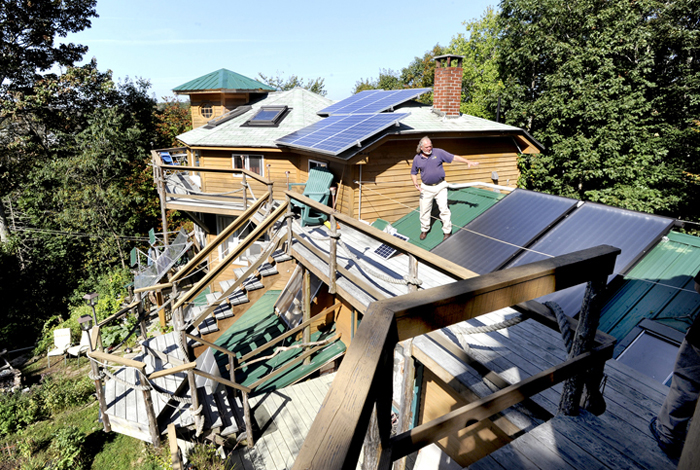
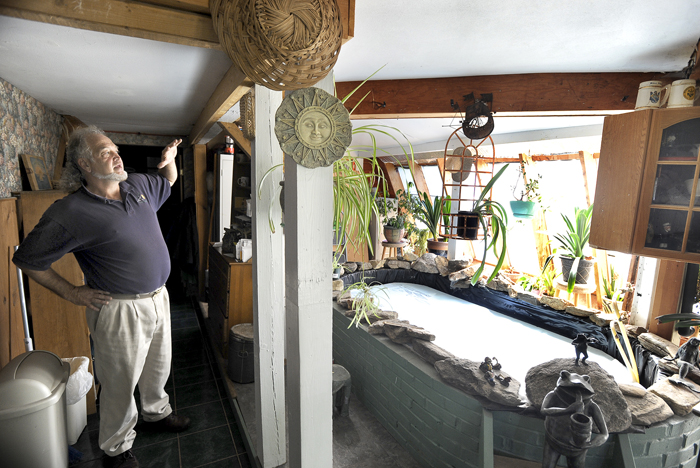
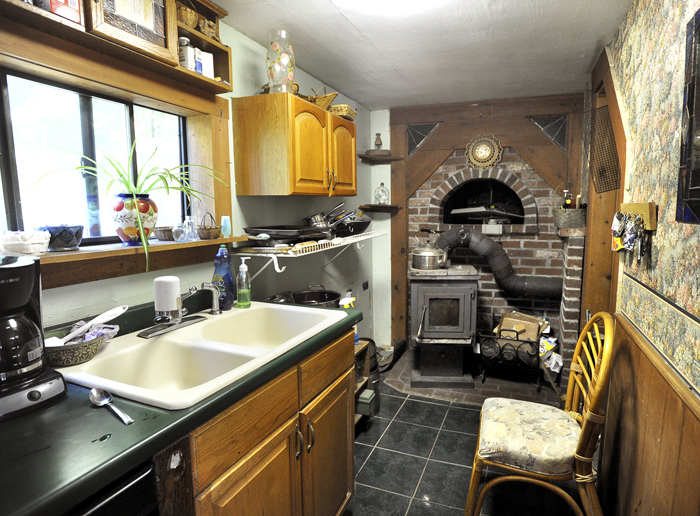
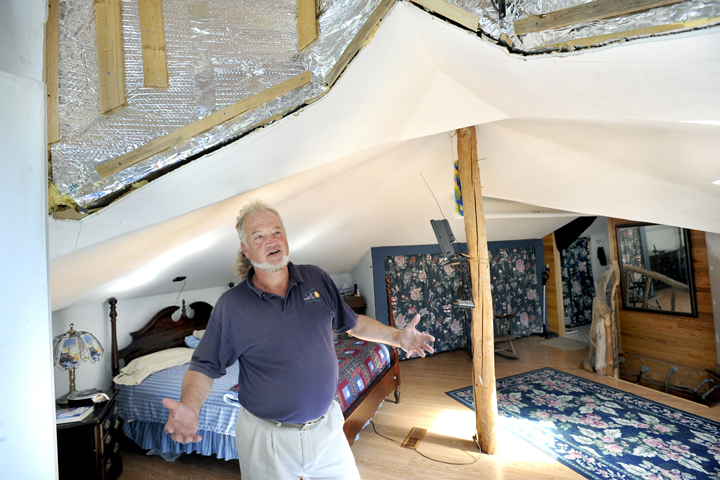
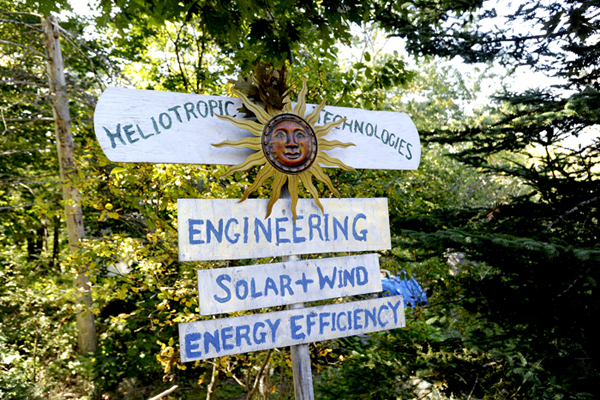

Success. Please wait for the page to reload. If the page does not reload within 5 seconds, please refresh the page.
Enter your email and password to access comments.
Hi, to comment on stories you must . This profile is in addition to your subscription and website login.
Already have a commenting profile? .
Invalid username/password.
Please check your email to confirm and complete your registration.
Only subscribers are eligible to post comments. Please subscribe or login first for digital access. Here’s why.
Use the form below to reset your password. When you've submitted your account email, we will send an email with a reset code.